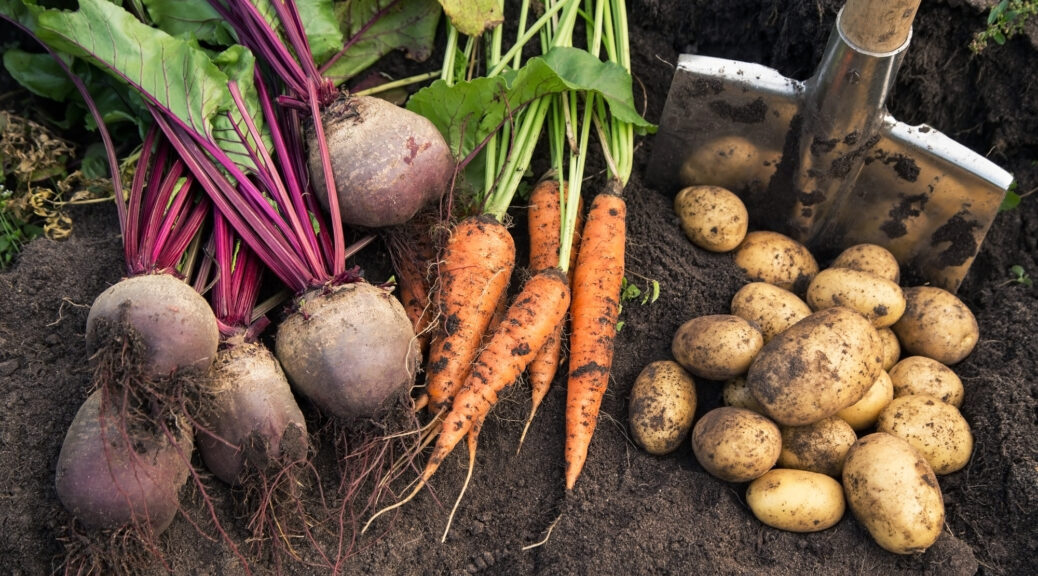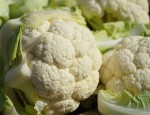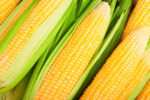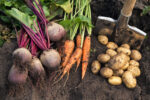
To Keep Vegetables for Winter
Although you could dry or can vegetables for winter, it was nice to have some fresh ones, too. Vegetables both had to be protected from freezing winter conditions, but also stored so they wouldn’t spoil before spring. People usually had a cellar underneath their house or a root cellar outdoors for food storage.
INFORMATION BELOW COMPILED FROM 1800s COOKBOOKS
SQUASHES should never be kept down cellar when it is possible to prevent it. Dampness injures them. If intense cold makes it necessary to put them there, bring them up as soon as possible, and keep them in some dry, warm place.
To prevent ONIONS growing when storing, singe the roots thoroughly with a red hot poker. Always hang up onions in a dark cool place when storing, and use them as required, leaving the bulk to hang.
CARROTS, PARSNIPS, BEETS, and SWEET POTATOES should all be housed before the first frost. Arrange them side by side and bury them in dry sand; a bed of sand at the bottom; another between each layer of the vegetables, and a thick sand covering for the whole. When wanted for use, begin at one end, and draw them out in regular order, and not out of the middle till you come to it.
CABBAGES put into a hole in the ground will keep well during the winter, and be hard, fresh, and sweet in the spring. Many farmers keep potatoes in the same way.
String MUSHROOMS and ARTICHOKES on a string with a bit of wood knotted in between each to prevent their touching. Hang in a dry place.
To dry OKRAS for winter, get the young okras, slice and string them, and hang them up to dry. When dry, put them away for soup in winter.
CELERY should be put in a box with the roots down, covered with sand. Some gardeners keep it in the ground all winter, and dig it as they wish it.
POTATOES should be carefully looked to in the spring and the sprouts broken off. The cellar is the best place for them because they are injured by wilting, but sprout them carefully if you want to keep them. They never sprout but three times. Thereafter, they will trouble you no more.
OR the dust of charcoal sprinkled over potatoes will keep them from sprouting.
Take KIDNEY BEANS when they are young and leave on both the ends. Lay a layer of salt at the bottom of your pot, and then a layer of beans, and so on till your pot be full. Cover them close at the top that they get no air, and set them in a cool place. Before you boil them, lay them in water all night. Let your water boil when you put them in, (without salt) and put into it a lump of butter about the bigness of a walnut.
Gather GREEN TOMATOES, not very large. Put them down to boil with plenty of water. Throw this water off, then add more water and some green ginger. Let this boil till the water tastes of the ginger very strong. Allow three quarters of a pound of sugar to a quart of juice. Make a syrup, put in the tomatoes, and let them boil till clear. The syrup, when boiled down, will make a nice jelly.
To keep CORN for winter, get the corn when young. Take off all the outside husks, fasten the inside ones down tight, and pack in barrels or boxes with salt in alternate layers. Keep in a cool place or the corn will heat and spoil.
OR boil corn for ten minutes; a longer time would injure it. Cut it from the cob, spread it on dishes, and put it in the oven after the bread comes out. Be careful the oven is not too hot. If it is, the corn will be spoiled. If not dry enough, put it in the sun for a few days, stirring it frequently. When perfectly dry, tie it up in bags and keep it in a dry place.
When you cook the corn, wash it well, put it down with a little water, butter, pepper and salt. It will require much longer to cook than it does in summer.
Take a good sweet PUMPKIN, halve it, take out the seeds, and cut it in chips of the size of a dollar [coin]. To each pound of pumpkin, allow a pound of powdered loaf-sugar* and a gill* of lemon juice. Put your pumpkin chips in a dish and to each layer, put a layer of sugar. Pour the lemon juice over the whole and let it stand a day. Then boil it till tender, with half a pint of water to four or five pounds of the pumpkin. Tie up ginger in a bag and boil with it, also the rind of several lemons, cut into chips.
OR cook and sift pumpkin it as fine as for pies. Then add nearly as much sugar as there is pumpkin. Stir well and pack in crocks. Better than dried pumpkin for winter use.
*loaf-sugar – sugar sold in a hard block, which has to be broken and then pounded into sugar granules.
*gill or jill – a liquid measurement; four ounces (1/2 cup) in the U.S. and five ounces in the U.K.
Pare and slice CUCUMBERS (as for the table), sprinkle well with salt, and let them remain for 24 hours. Strain off the liquor and pack in jars, a thick layer of cucumbers and salt alternately. Tie down closely and when wanted for use, take out the quantity required. Now wash them well in fresh water, and dress as usual with pepper, vinegar, and oil.
Green beans, gherkins, etc., put down when plentiful in layers of rock salt, will keep crisp and green for months, and can be taken out and pickled when convenient.
PEPPER HASH (Uncooked.) Chop one head of cabbage, one bunch celery, one half dozen green peppers and one half dozen peeled and sliced onions fine together, and let stand over night. Drain in the morning and mix the chopped vegetables with one quart of vinegar, two cups white sugar, one half cup of salt, two tablespoons of mustard seed and one tablespoon of celery seed. Seal in jars, keeps well all winter.
=================================================
Do You Store Food You’ve Grown or Made? Please Leave a Comment Below
=================================================




